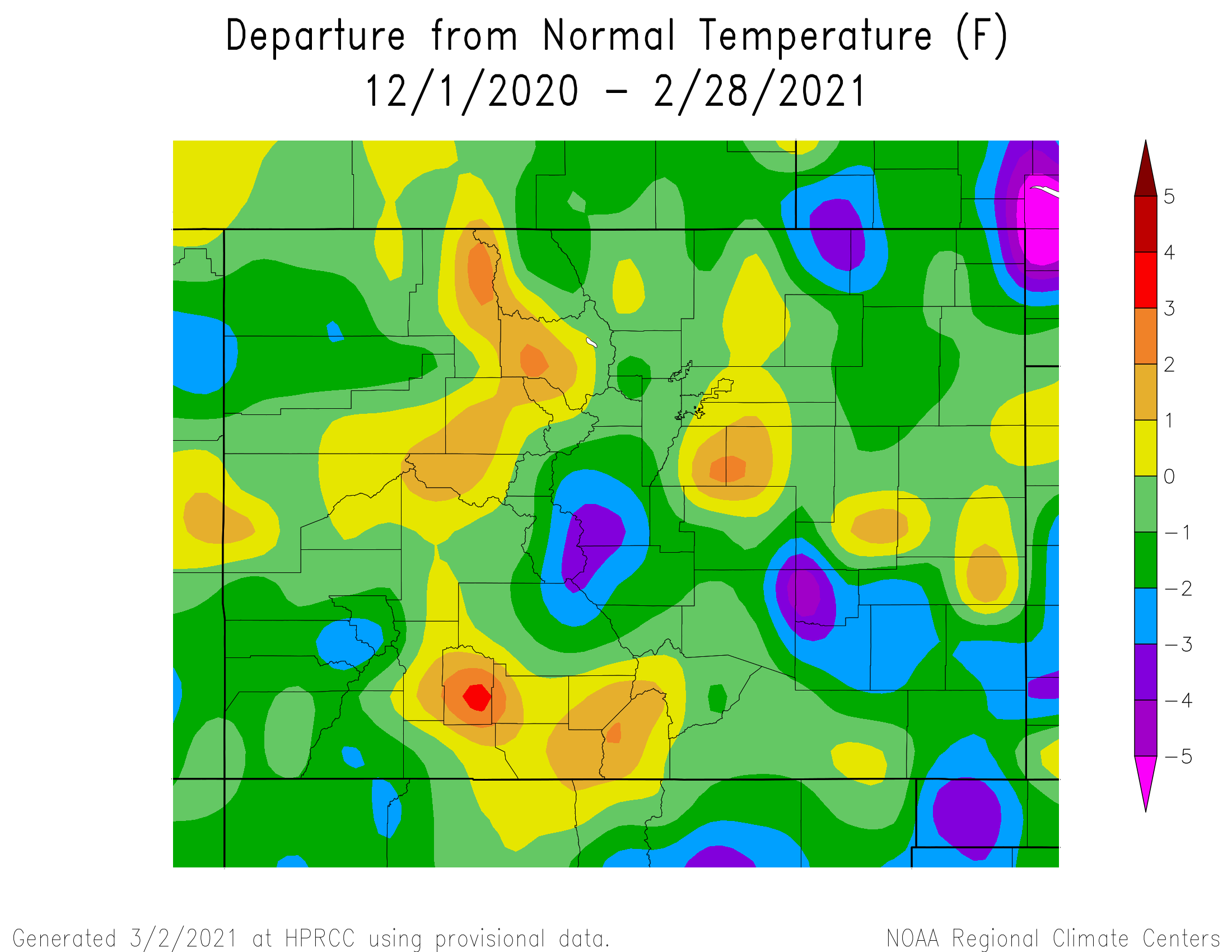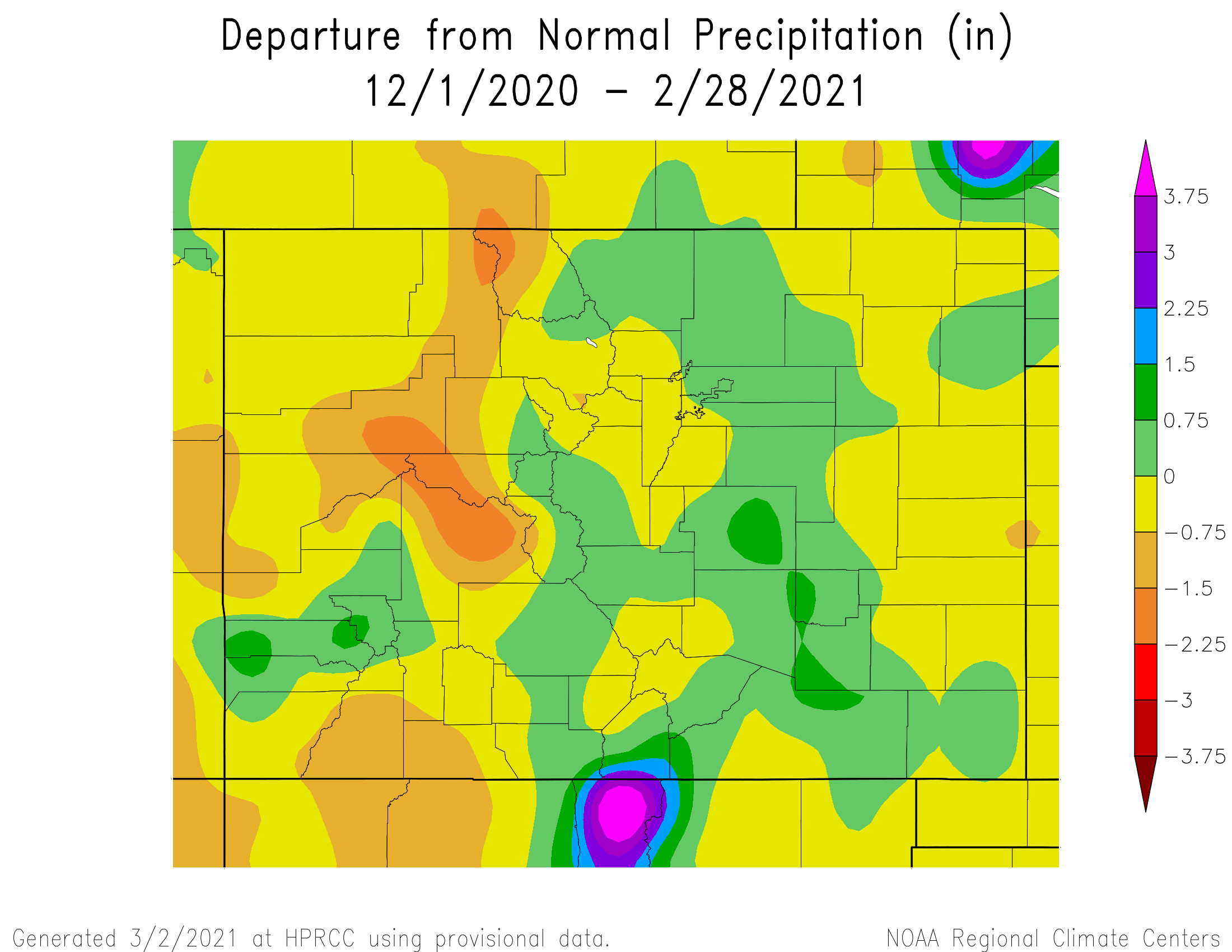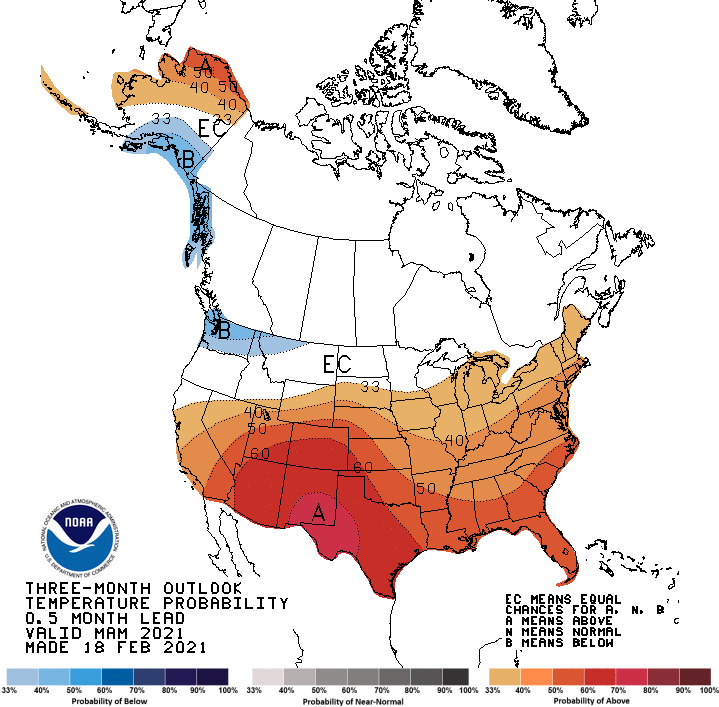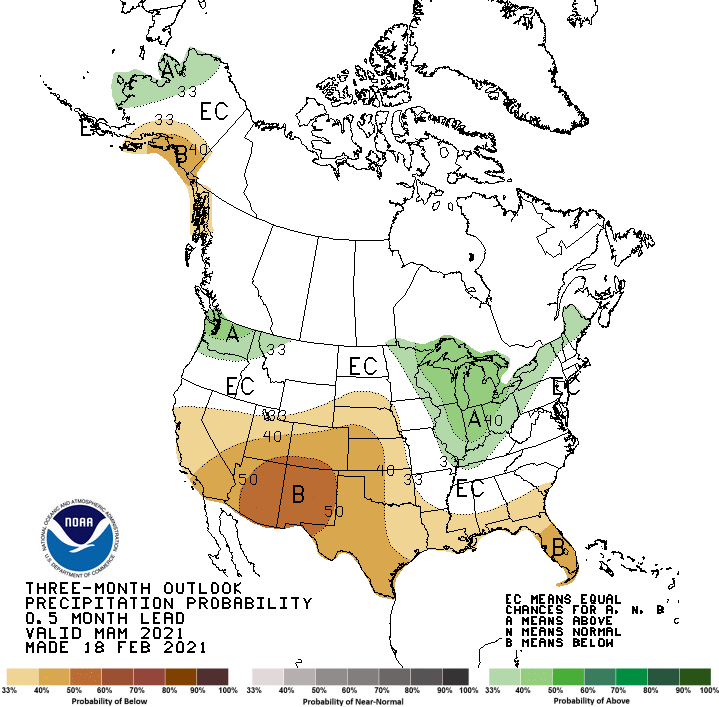Meteorological Winter of 2020-21 (December, January and February) started with ebbs and flows of temperatures, as a several passing weather systems through the month of December brought beneficial moisture and snowfall, especially to portions of the southeast mountains and plains, along with some briefly cooler temperatures, before warmer and drier conditions returned across the region. January of 2021 followed suite from the previous month of December, with south central and southeast Colorado seeing several passing weather systems bringing cooler temperatures and beneficial moisture and snowfall, along with bouts of strong winds and blowing dust to portions of the southeast plains, before warmer and drier conditions returned. February started out warm and dry across south central and southeast Colorado before several passing weather systems through the middle and end of the month, brought beneficial moisture and record breaking cold temperatures to most of the area. Portions of the southeast plains did not see temperatures warm above the freezing mark for 10 consecutive days, with many areas of the plains also setting multiple records for the coldest minimum temperatures in the February 12th through February 16th timeframe. Colorado Springs also set a new lowest maximum temperature of -1 degree on February 14th, making it one of only 18 days on record in which the temperature never got above zero degrees in Colorado Springs.
For the Winter of 2020-21 as a whole, near normal to below temperatures were experienced across the area, save for at to slightly above normal temperatures across the southwest mountains and into the San Luis Valley, as well as areas along the Palmer Divide. As for precipitation, near to above normal conditions were experienced across the region through the Winter of 2020-21, save for pockets of below normal precipitation for areas along the Continental Divide and portions of the southeast plains.
 |
 |
The preliminary average temperature for the Winter of 2020-21 in Alamosa was 20.5 degrees, which is normal. Alamosa recorded 0.87 inches of precipitation through the Winter of 2020-21, which is normal. Alamosa recorded 13.2 inches of snow through the Winter, which is 0.9 inches above normal.
(click here for a more detailed Winter of 2020-21 Climate Summary in Alamosa)
The preliminary average temperature for the Winter of 2020-21 in Colorado Springs was 30.4 degrees, which is 0.4 degrees below normal. Colorado Springs recorded 1.93 inches of precipitation through the Winter. This is 0.93 inches above normal and makes the Winter of 2020-21 the 9th wettest Winter on record in Colorado Springs. This remains well behind the wettest Winter, 1933-1934, when 4.05 inches of precipitation was recorded. Colorado Springs recorded 26.6 inches of snow through the Winter. This is 10.4 inches above normal and makes the Winter of 2020-21 the 8th snowiest on record. This remains well behind the snowiest Winter, 1986-87, when 56.3 inches of snow was recorded in Colorado Springs.
(click here for a more detailed Winter of 2020-21 Climate Summary in Colorado Springs)
The preliminary average temperature for the Winter of 2020-21 in Pueblo was 30.8 degrees, which is 0.7 degrees below normal. Pueblo recorded 1.21 inches of precipitation through the Winter, which is 0.18 inches above normal. Pueblo recorded 17.6 inches of snow through the Winter of 2020-21, which is 1.8 inches above normal.
(click here for a more detailed Winter of 2020-21 Climate Summary in Pueblo)
Below is the Climate Prediction Center's (CPC) temperature and precipitation outlook for the Spring of 2021 (March, April and May), which indicates better chances of above normal temperatures and below normal precipitation across south central and southeast Colorado.
 |
 |